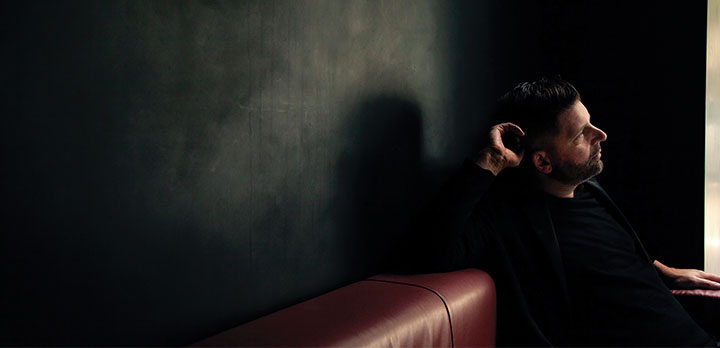Q&A with Matthias Pintscher

by Franck Mercurio
Matthias Pintscher recently spoke to Fanfare Cincinnati about Ravel + Debussy and the cello concerto, un despertar (“an awakening”), he wrote for Alisa Weilerstein.
You’ll be presenting the music of two French composers (as well as your own) at the “Ravel + Debussy” concert. Can you talk a bit about your attraction to French culture and French music?
I have spent a lot of time in Paris, and even at a very young age I always felt more French than German. I left my country when I was 16 [to live in France], and naturally, French music has been very close to my heart. I love one element that basically all French art and culture shares: an appreciation and awareness of detail…. It’s something you can really connect with on any level, as a composer, as an interpreter, as a conductor, and as a teacher. I think it’s a wonderful thing to really investigate the detail and what it means to recognize style as a requirement for a standard repertoire.
The works by Ravel and Debussy both explore Spanish themes. Have you been to Spain?
Yes, I’m European at heart. I mean, I live in New York and still have a home in Paris, but I know Spain. I’ve seen it all: north, south, Andalucia, the east coast. And I’m very, very attracted by the culture, especially the culture of the north of Spain and Galicia. Ravel was a Basque man. He carried a French passport, but his blood was Basque.
And did his Basque background affect his music in any way?
There are all these wonderful stories about Maurice Ravel. Whenever there would be a dinner in his honor after a concert in Paris, he busted out a little miniature pepper mill (that you can still see if you visit his house). He put tons of pepper on the food, without even tasting it. He loved his spice, and [like his culinary tastes] the contour of his music is sometimes more Spanish than French. But he rounds the edges with a beautiful sophistication and satisfies the requirements of the style of French music.
And Debussy’s Images?
Really, Ibéria from Images is inspired by Spanish rhythms, by Spanish guitar playing and that sort of thing. The French would say “borrowed from another culture,” but completely seen through a true Frenchman’s eyes. So it’s French music throughout, but it adopts some Spanish elements like dance characteristics or dance forms. But, again, through the lens of Debussy—beautifully crafted. And that’s why I just love combining these composers and these two specific works, one by Debussy and one by Ravel.
What are the differences between Ravel and Debussy?
Both composers have a very, very different sonic identity. You have to rehearse each differently. With Ravel expect logic—everything is brutally logical—like you’re fulfilling pretty much every expectation in terms of the [musical] architecture. But with Debussy, you’re always up for a surprise. The music needs attention at every single bar; it’s very unexpected. Rehearsing Ravel next to Debussy is a different animal, and that’s why they go so beautifully next to each other in one particular program.
What is your cello concerto un despertar all about?
un despertar is based on a poem by Octavio Paz. It’s set in late January, winter time. There’s snow outside, and an old man stares out of his window and thinks back about his life—his accomplishments, his failures, his longings—letting all of the past and hope for the future circulate [like the snow outside]. No one is speaking; no one is driving; there’s no noise, but you hear the rich sound of the snow falling, and that’s something I tried to convey or portray [in this piece].
Alisa Weilerstein premiered un despertar in Boston in 2017. Why Alisa for this particular piece?
So, she created this work with me. While she did not write it, she gave birth to it and played it several times in several places, and she is a very welcomed soloist in Cincinnati.
And why a cello concerto as opposed to a violin concerto? You studied violin, correct?
Yes, that’s true. I originally set this Octavio Paz poem to music for baritone and piano and that morphed, or let’s say merged, directly into a cello concerto because [the human voice and cello] share a lot of timbres and colors. What I personally love about the cello, still being a violin player, is that the cello has this long range, from low to very high, almost going as high as a fiddle. I love the opportunity that the [cello’s] range allows to explore texture and color.